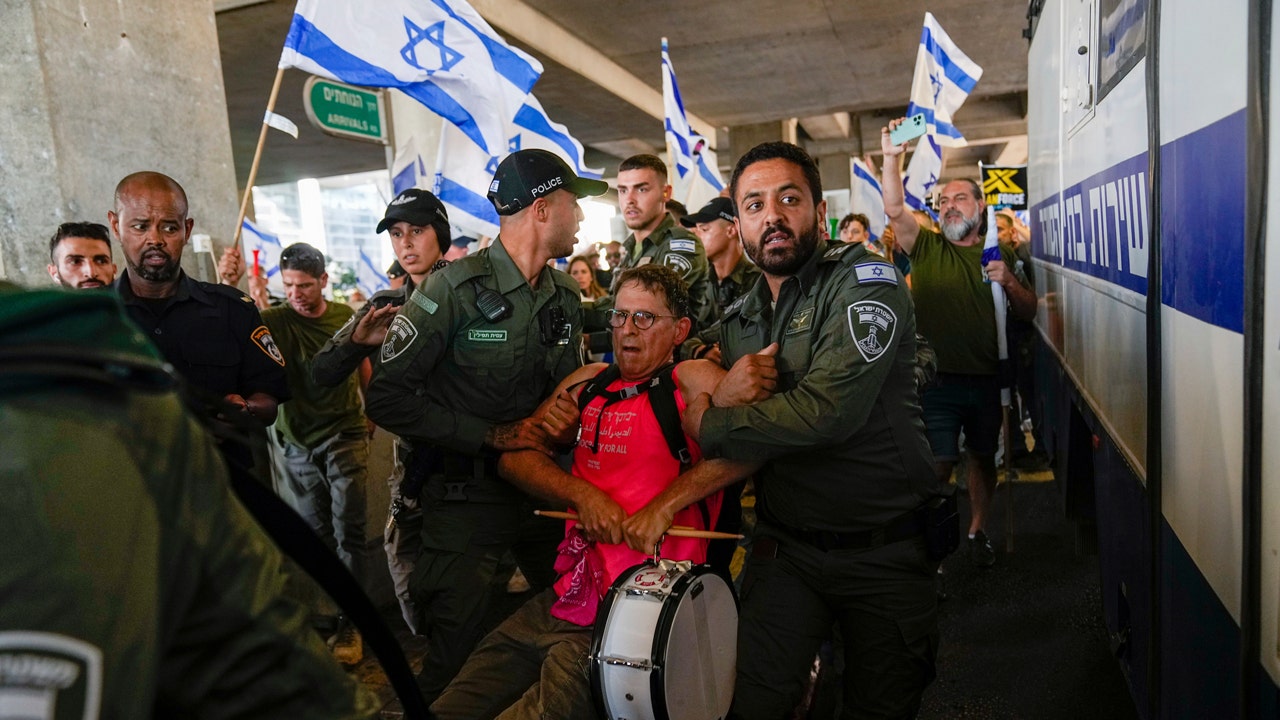As the rights women valiantly fought for during the women’s rights movement in the 1970s slip away, it’s essential to reflect on what our lives might look like if we continue to fail and dehumanize women. Based on actual events, Apple TV+‘s latest drama — its first Spanish-language series — “Women in Blue (Las Azules)” is a fantastic serial killer mystery that’s a thoughtful account of Mexico’s first female police force. Created by Fernando Rovzar and Pablo Aramendi, the 10-episode drama is smart and reflective, even when it leans slightly into the realm of telenovelas. Deeply detailed, “Women in Blue” takes its audience on a gripping ride that will leave them unsettled until the very end.
The series opens in Mexico City in 1971. Amid the bustle of the vibrant metropolis, a serial killer is wreaking havoc. Named the Tlalpan Underdresser by the press, the killer makes his mark by tying his victims up with rope, strangling them and leaving their bodies in a state of undress. As a result, the city’s female residents have become too fearful to leave their homes. Amid the chaos, the audience is introduced to four central characters. María (Bárbara Mori) is a devoted mother and housewife who has always secretly longed for a bit of adventure. Valentina (Natalia Téllez), María’s rebellious younger sister, is no stranger to speaking her mind and making a ruckus, especially when combating stifling machismo. Ángeles (Ximena Sariñana), a brilliant fingerprint analyst, has trouble expressing her emotions, but is determined to provide a better life for herself and her elderly grandmother. Finally, there is Gabina (Amorita Rasgado), whose father is a renowned commander in law enforcement and whose brothers wear badges as well.
Desperate to change the narrative surrounding the police department’s failures as the killer continues his reign of terror, Police Chief Emilo Escobedo (Christian Tappan) decides to open the Federal District Police Force to women. Despite internal and familial objections, María, Valentina, Ángeles and Gabina join the police academy, training under newly reinstated Captain Octavio Romandía (Miguel Rodarte). However, even as they prove themselves more than worthy of wearing their badges, the women must contend with enraged family members, a skeptical public and colleagues who relegate them to assistant and secretarial roles.
Disgusted by the treatment they receive from the top down at the police department, and armed only with whistles and go-go boots, the foursome band together to create a timeline for the Underdresser’s crimes. Ángeles’ meticulousness, María and Valentina’s determination and Gabina’s proximity to her older brother Gerado (Horacio Garcia Rojas) — who happens to be the lead detective on the case — help them find clues about The Underdresser that had previously gone overlooked.
While all the characters are compelling, María and Ángeles have the most fascinating arcs. Torn between her desire to follow her dreams and continuing with her traditional housewife role, María struggles with mom guilt as she reconsiders the life she’d always thought she wanted. In contrast, Ángeles, who is who is depicted as processing information differently than others, learns to speak up for herself and her opinions in a society that has worked overtime to dismiss her ideas and particular way of thinking.
While some episodes are more effective than others, Episode 8, “Rosa,” zips back in time some two decades, giving the viewer a shocking window into The Underdresser’s upbringing. Though unpacking the murderer’s sinister behavior is deeply disturbing, the most alarming theme in “Women in Blue” is the treatment of women by the men who claim to love them — the central characters are disrespected and chronically underestimated at every turn in both private and professional spaces. Episode 4, “Alma,” and Episode 5, “Ángeles,” depict how someone like The Undresser can continue to move about Mexico City unchecked, weaponizing his rage and disdain for the female sex while evading consequences.
Though uncovering The Underdresser’s identity is central to the show, accessing the interior lives of the women cops allows the audience to connect with them beyond the walls of the police precinct. While being undermined at every turn, the ladies must address the costs of their chosen profession — and what that means for their respective futures.
In the end, “Women in Blue” succeeds not only because of its distinct characters and truly intriguing mystery, but also because it showcases how patriarchal ideals and misogyny harm not just women but society as a whole. It’s breathtaking to witness how ingrained sexism is, and even more so to examine what it will take to begin dismantling its poisonous web.
The first two episodes of “Women in Blue premiere July 31 on Apple TV+ with new episodes dropping weekly on Wednesdays.
.png)









 English (US) ·
English (US) ·